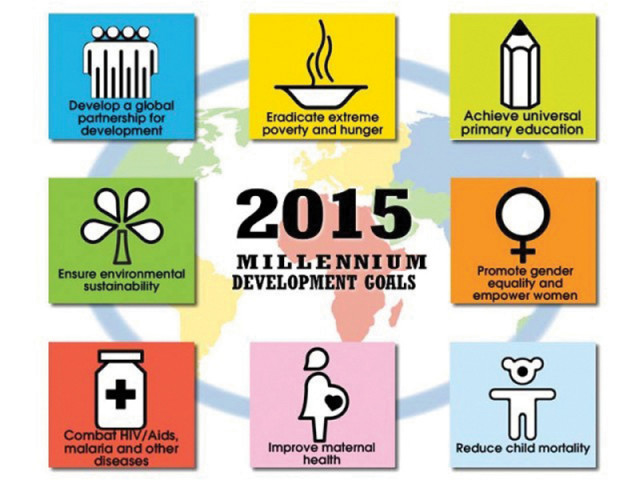
Amid considerable progress towards Millennium Development Goals (MDGs) by regional peers, Pakistan will achieve only half a dozen targets out of 22 indicators by 2015, as the country performed poor on goals of health, education, gender parity and environment, says the latest report by the Asian Development Bank (ADB).
According to the Asia Pacific Regional MDGs Report 2012-13, the region made impressive progress towards attaining most of the goals agreed under global development agenda but the progress was uneven. Despite significant progress, the region will keep hosting the largest world population living in deprivation, highlighting policy goals in a post MDGs 2015 world.
The eighth edition of the report comes at a critical juncture when the countries need one big final push to achieve the MDGs in less than 1,000 remaining days before the deadline lapses.
The report has disintegrated the targets into those already achieved, the ones that the countries may achieve with some extra efforts, the goals that could be achieved after 2015 and some of them that may never be achieved.
One of the major reasons behind the failure to achieve targets was high population growth rate, low economic growth rate and lack of resources to finance the initiatives needed to achieved these targets.
Out of 22 indicators, Pakistan achieved four, may achieve another three by 2015, could achieve a dozen after 2015, while three will never be achieved, according to the ADB assessment. Out of the four achieved, the progress on first indicator under the MDG-I, eradicating poverty and hunger, was questionable due to reservations over quality of data.
Pakistan achieved the sub-goal of reducing number of people living on $1.25 per day earning. As against the original ratio of 64% people living on $1.25 a day in Pakistan, fresh estimates showed that 21% people lived on $1.25 a day. However, there are question marks over the methodology used to work out the figure and there is no consensus between the successive governments and independent economists.
Finance Minister Ishaq Dar too questioned the purchasing power parity (PPP) on the basis of $1.25 dollar a day. He said on Friday that the PPP of ten years back was not the same today and the base should be increased to $2.5 a day. He said that with a base of $2.5 a day, half of the population lives in poverty and deprivation.
The country also managed to achieve the sub-goals of curbing Tuberculosis (TB) prevalence, protecting forestry area and reducing carbon dioxide omissions.
The ADB said Pakistan can also achieve the targets of reducing the number of people living below poverty line by 2015, as it has made significant progress towards this end. Further, the targets for curbing HIV-AIDS prevalence and reducing TB incidences are likely to be met before expiry of the deadline.
However, as compared to the successes, the failures were more and glaring. The report noted that the progress made so far showed that Pakistan will achieve a dozen targets, but after the expiry of the 2015 deadline. On the indicator of underweight children the country did not make much progress. Similarly targets for primary enrollment rate, primary level completion rate, gender parity index in primary and tertiary, will also be missed by the deadline.
The report stated that the Asia-Pacific region has three of the world’s top five largest out-of school populations including Pakistan having largest out of school children in the region, totaling at 5.4 million children.
On goals 4 and 5, the country will miss all indicators. These include the under five year mortality rate, infant mortality rate, maternal mortality rate, skilled birth attendance and first visit of attendants after birth of a child. On goal 7 –ensure environmental sustainability– the indicators of safe drinking water and basic sanitations will be missed and could be achieved after the deadline.
The areas where Pakistan can never achieve the targets are reaching completing education (for students), gender parity in secondary education and forest coverage, according to the ADB report.
The Asia-Pacific region as a whole has achieved considerable success with the MDGs but even after 2015, there will be a significant ‘unfinished agenda’, said the ADB. The region also faces many emerging threats including rising inequality and unplanned urbanisation, along with climate change and environmental pressures such as pollution and water scarcity, which will become base for Post MDG era.
Published in The Express Tribune, September 21st, 2013.
Like Business on Facebook, follow @TribuneBiz on Twitter to stay informed and join in the conversation.


















COMMENTS
Comments are moderated and generally will be posted if they are on-topic and not abusive.
For more information, please see our Comments FAQ